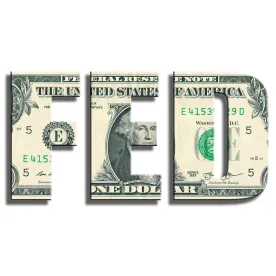As part of its suite of responses to the economic distress of the COVID-19 pandemic, the Federal Reserve has announced the creation of its Main Street Lending Program to facilitate the issuance of credit to small and mid-sized U.S. businesses. The program was originally announced on March 23, with new term sheets published on April 9 (the “April 9 Release”), a comment period ending April 16 resulting in ~2,200 comments, and most recently, a release on April 30 (the “April 30 Release”) with updated term sheets and a frequently asked questions document (the “FAQ”). The April 30 Release provided significant new details about the program, including expanded eligibility to businesses with fewer than 15,000 employees or less than $5 billion in 2019 revenue and the addition of a new “priority loan” facility. The latest release fills in some key additional details on the program, but some significant issues and open questions remain, including the expected launch date.
The Main Street Lending Program is designed to fill the gap between (1) the small businesses that would be assisted by the Paycheck Protection Program (the “PPP”), along with other existing and expanded Small Business Association (“SBA”) lending activity contemplated by the Coronavirus Aid, Relief, and Economic Security Act (the “CARES Act”) and (2) the large investment grade corporations that would be supported by the Federal Reserve’s announced primary and secondary market corporate credit facilities. The Main Street Lending Program would purchase participations in eligible debt from the originating lenders, with the lenders retaining a specified portion—therefore key features of the program are that it operates through the origination and underwriting apparatus of the existing banking system rather than via direct loans from the U.S. Treasury or Federal Reserve and that it primarily functions through alignment of incentives between the lenders and the Federal Reserve rather than through specified credit underwriting criteria. Loans under the Main Street Lending Program would be administered by the Federal Reserve Bank of Boston (the “Boston Fed”), are full recourse and are not eligible for forgiveness.
Unlike the SBA lending assistance, which is limited to the amounts appropriated for that purpose under the CARES Act, the Main Street Lending Program would utilize an initial invested amount of $75 billion from the U.S. Treasury along with leverage from the Federal Reserve to expand the total lending capacity of up to $600 billion. Below we present details on the Main Street Lending Program from the materials currently published, as well as discussion of some issues and open questions related to the program.
Main Street Lending Program Summary
The Boston Fed will create a special purpose vehicle (the “Fed SPV”), capitalized with a $75 billion investment from the U.S. Treasury under the CARES Act, along with leverage from the Federal Reserve, to support an initial total lending amount of up to $600 billion in aggregate. The April 9 Release described two facilities—a Main Street New Loan Facility (the “MSNLF”) that would purchase participations in newly originated loans and a Main Street Expanded Loan Facility (the “MSELF”) to purchase participations in new tranches added to existing loans (called “upsized trauches”). The April 30 Release announced the addition of a new third facility, the Main Street Priority Loan Facility (the “MSPLF” and together with the MSNLF and MSELF, the “Facilities”), that would function similarly to the MSNLF, but would allow for a higher leverage ratio, would require the retention of a greater participation interest by the originating lender and would allow the refinancing of certain existing debt. The Facilities do not differ in terms of borrower eligibility, though market commentary suggests the MSPLF was in part created with distressed oil and gas businesses in mind.
The Fed SPV would purchase participations in eligible new loans (under the MSNLF and MSPLF) and eligible new tranches of existing loans (under the MSELF) from the originating lender in “true sales” as expeditiously as possible after origination, with the originating lender performing the underwriting and documentation roles, retaining the remaining portion of the debt and acting as servicer. Thus far the program terms are silent as to whether the Fed SPV would have any initial or springing control rights as the majority lender with respect to its participation interest. The launch date is not yet determined and the Facilities would cease purchasing eligible loans on September 30, 2020, unless extended.
The Facilities follow the same basic structure, and have many of the same key terms—however they differ in several important respects that may make them more or less suited for particular borrowers or situations. Below is a comparison table of the key differences among the facilities.
Key Differences Comparison Table
| Facility | Main Street New Loan Facility or MSNLF | Main Street Priority Loan Facility or MSPLF | Main Street Expanded Loan Facility or MSELF |
| Minimum Loan Amount | $500,000 | $500,000 | $10,000,000 |
| Maximum Loan Amount | Lesser of (i) $25m and (ii) an amount that when added to existing (including committed but undrawn) debt does not exceed 4x borrower adjusted 2019 EBITDA | Lesser of (i) $25m and (ii) an amount that when added to existing (including committed but undrawn) debt does not exceed 6x borrower adjusted 2019 EBITDA | Lesser of (i) $200m, (ii) 35% of borrower existing (including committed but undrawn) debt and (iii) an amount that when added to existing (including committed but undrawn) debt does not exceed 6x borrower adjusted 2019 EBITDA |
| Repayment Terms | No payments for 12 months, thereafter amortized 33.33% at year end in years 2-4 | No payments for 12 months, thereafter amortized at year end 15% year 2, 15% year 3 and 70% year 4 | No payments for 12 months, thereafter amortized at year end 15% year 2, 15% year 3 and 70% year 4 |
| Refinancing | No—may not be used to refinance existing debt | Yes—may be used at the time of origination to refinance existing debt from other lender | No—may not be used to refinance existing debt |
| Originator Retention Requirement | 5% | 15% | 5% |
| Program Fees |
Origination Fee to Lender: up to 100 bps Transaction Fee to Fed SPV (paid by lender but may be passed through to borrower): 100 bps |
Origination Fee to Lender: up to 100 bps Transaction Fee to Fed SPV (paid by lender but may be passed through to borrower): 100 bps |
Origination Fee to Lender: up to 75 bps of new tranche Facility Fee to Fed SPV (paid by lender but may be passed through to borrower): 75 bps of new tranche |
| Security | May be secured or unsecured | May be secured or unsecured | Requires pro rata security interest in any (existing or new) collateral securing the existing loan |
|
Seniority Level |
May not be contractually subordinated to existing debt or other debt incurred during term, though may be effectively subordinated to other secured debt (mortgage or non-mortgage) | Must be senior to or pari passu with other debt in terms of priority and security, other than mortgage debt | Must be senior to or pari passu with other debt in terms of priority and security, other than mortgage debt |
Main Street Lending Program Detailed Terms
Eligible Lenders: U.S. federally insured depository institutions (which include banks, savings associations and credit unions), U.S. bank holding companies and U.S. savings and loan holding companies, as well as a U.S. branch, agency or intermediate holding company of a foreign bank and U.S. subsidiaries of any of the above.
Eligible Borrowers:
-
U.S. businesses (created or organized in the U.S. or under laws of the U.S. with both significant operations and the majority of its employees based in the U.S.) established prior to March 13, 2020
-
Up to 15,000 employees or up to $5 billion in 2019 annual revenue, in each case aggregating with affiliates in accordance with the affiliate aggregation regulations and guidance from the SBA governing the PPP—which generally includes other businesses with common majority ownership or common ownership with certain control rights
-
Meets the definition of “Business”, which includes most business legal entity types, but would exclude non-profit organizations, governmental organizations (other than Indian tribal organizations) and joint ventures with more than 49% participation by a non-U.S. business
-
Borrowers that utilize any one of the Facilities are not eligible under the other two Facilities, though a borrower may obtain multiple loans under a single Facility, subject on an aggregate basis to the maximum loan amount, and entities that utilize the Federal Reserve’s Primary Market Corporate Credit Facility or have received targeted support under the CARES Act for certain passenger or cargo air or related contractors are not eligible
-
PPP borrowers and affiliates remain eligible under the Main Street Lending Program
-
If the borrower had other loans outstanding with the lender as of December 31, 2019, the borrower is only eligible if those loans had an internal risk rating equivalent to “pass” under the Federal Financial Institutions Examination Council’s rating system as of such date
-
Must not be an “Ineligible Business” under SBA regulations and guidance relating to eligible businesses under the PPP—“Ineligible Businesses” would generally include the following categories (subject to further guidance from the Federal Reserve):
-
Businesses primarily engaged in lending, loan packaging or life insurance companies, as well as hedge funds or private equity funds (though portfolio companies may still be eligible if they otherwise meet the requirements)
-
Passive businesses owned by developers and landlords not actively using or occupying the owned assets, other than “Eligible Passive Companies” meeting the SBA’s requirements
-
Illegal or “vice” businesses, including businesses engaged in any illegal activity (including marijuana-related businesses), more than one third of revenue from legal gambling (or up to 50% for smaller gaming operations), pyramid sales schemes, or relating to sale of materials or performance of a prurient sexual nature
-
Businesses primarily engaged in political or lobbying activities
-
Businesses where an owner (of greater than 20% of equity) or certain senior employees are incarcerated, on parole, on probation or have been indicted for a felony or crime or moral turpitude
-
Businesses where the lender owns an equity interest, and special rules for businesses owned by directors or equity owners of the lender
-
Speculative businesses (such as oil wildcatting)
-
*Note that there are complex and detailed rules as to SBA program eligibility available in the SBA’s Standard Operating Procedure, SBA releases related to PPP borrower eligibility and Polsinelli alerts related to the PPP.
Eligible Loan Terms
-
Maturity – Four year term loans
-
Payment deferral period – principal and interest payments deferred for 12 months (with deferred interest capitalized)
-
Repayment terms – Principal amortized at year end in years two to four, 33.3% each year for the MSNLF and 15%, 15%, 70% for the MSPLF and MSELF
-
Interest rate – 1 or 3 month LIBOR plus 3.00%, for all Facilities
-
Prepayment – permitted at any time without penalty
-
Fees:
-
Origination Fee -- Lenders would be able to charge borrowers an origination fee of up to 100 basis points (MSNLF and MSPLF) or 75 basis points on the new tranche (MSELF)
-
Transaction Fee -- The Fed SPV would charge a facility fee of 100 basis points for new loans (MSNLF or MSPLF) or 75 basis points on the new tranche (MSELF), which the lender may pass through to the borrower
-
The Fed SPV would pay a 25 basis points per annum fee on its participation interest to the lender for servicing the loan
-
-
Loan Amounts – determined in accordance with underwriting, subject to the maximum and minimum amounts below:
-
Minimum – $500,000 (MSNLF and MSPLF) and $10 million (MSELF)
-
Maximum:
-
MSNLF - Lesser of (i) $25m and (ii) an amount that when added to existing (including committed but undrawn) debt does not exceed 4x borrower adjusted 2019 EBITDA
-
MSPLF - Lesser of (i) $25m and (ii) an amount that when added to existing (including committed but undrawn) debt does not exceed 6x borrower adjusted 2019 EBITDA
-
MSELF -- Lesser of (i) $200m, (ii) 35% of borrower existing (including committed but undrawn) debt and (iii) an amount that when added to existing (including committed but undrawn) debt does not exceed 6x borrower adjusted 2019 EBITDA
-
-
Priority, Security and Credit Underwriting – The FAQ specifies that the criteria stated in the term sheets are minimum requirements, that lenders are expected to apply their own underwriting standards and that lenders should only offer loans consistent with their underwriting requirements. Therefore potential borrowers that are otherwise eligible may not be able to obtain a Main Street Lending Program loan, may receive less than the calculated maximum amount or may be required to provide collateral or other credit support not required under the term sheets, due to lender-imposed constraints.
Subject to the foregoing, new loans under the MSNLF or MSPLF may be secured or unsecured. New tranches on existing loans under the MSELF may be unsecured, but are required to have a pro rata security interest in any collateral securing the existing loan (whether pledged at origination of the existing loan or the new tranche). However, new loans under the MSPLF and new tranches on existing loans under the MSELF must be and remain at all times senior to or pari passu with, in terms of both priority and security, other debt obligations of the borrower, other than mortgage debt. Therefore borrowers that have (or will have) other secured debt other than mortgage debt, would be required to equally secure the Main Street Lending Program debt. In contrast, the MSNLF in this regard only prohibits the new loan from being contractually subordinated to existing debt, so the MSNLF new loan would not be required to share in any security for any existing or future other secured debt, whether mortgage or non-mortgage.
Certifications and Covenants – Borrowers and Lenders would be required to make the following certifications and covenants, which are common across the Facilities except as stated:
-
The borrower may not, and lender may not request, the payment of interest or principal on existing debt, except for payments that are mandatory and due, including pursuant to acceleration, with the following exceptions:
-
Borrowers are permitted to repay lines of credit in accordance with their normal course of business, to take on and pay additional debt obligations (secured by newly acquired property) in the normal course of business and to refinance maturing debt
-
Borrowers of MSPLF loans may use the proceeds at origination (but not thereafter) to refinance existing debt of a lender other than the MSPLF lender
-
-
The lender and the borrower commit that they will not cancel or reduce existing lines of credit outstanding between the parties (or, with respect to the borrower covenant, with any other lender), except in the case of default;
-
The borrower certifies that it “has a reasonable basis to believe” as of origination and after giving effect to the new borrowing, that it will be able to meet its financial obligations for at least the next 90 days and does not expect to need to file for bankruptcy protection during that period;
-
The lender certifies that the methodology for calculating the borrower’s adjusted 2019 EBITDA for purposes of the loan amount maximum calculation is consistent with the methodology previously used with the borrower or similarly situated borrowers, or consistent with the methodology of the existing loan in the case of the MSELF;
-
The borrower attests that it will comply with the restrictions on compensation, stock repurchase and capital distribution included under Section 4003 of the CARES Act.
-
Compensation – For the term of the loan plus one year:
-
No officer or employee with total compensation greater than $425,000 in 2019 (other than pursuant to a collective bargaining agreement entered into prior to March 1, 2020) may receive total compensation during any consecutive 12 month period in excess of their 2019 compensation nor shall receive severance or other termination benefits in excess of two times their 2019 total compensation; and
-
No officer or employee with total compensation greater than $3 million in 2019 may receive total compensation during any consecutive 12 month period in excess of $3 million plus 50% of that employee’s compensation in excess of $3 million in 2019.
-
-
Buybacks – the recipient may not purchase any listed equity security of itself or any parent company (except under pre-existing contractual obligations) for the term of the loan plus one year.
-
Capital Distributions – the recipient may not pay dividends or other capital distributions with respect to common stock for the term of the loan plus one year; provided that entities that are “pass-through” for tax purposes may make distributions to the extent necessary to fund the owners’ tax obligations in respect of the passed through earnings.
-
-
Lenders and borrowers certify that they are eligible to participate under the terms of the Facilities, including the conflict of interest prohibition in Section 4019 of the CARES Act. The conflicts of interest provision generally prohibits participating by certain members of the Presidential Administration, Congress, their families and entities they control.
-
Borrowers “should make commercially reasonable efforts” to retain their employees and maintain their payroll while the Main Street Lending Program loan is outstanding. The FAQ clarifies that this is a good faith obligation that takes into account the financial situation of the borrower, economic environment and business need for employees. Borrowers that have already engaged in layoffs or furloughs remain eligible for Main Street Lending Program loans and there is no explicit obligation to restore those employees.
Significant Open Issues
As the market awaits additional details on how the Facilities will be implemented, there are several key open issues that we expect to play out in further releases and development of the Facilities, and in borrower and lender decisions whether and on what terms to participate:
-
Credit Underwriting Matters – The Facilities involve a structure where the originating lender retains a minority of the credit risk, the bulk of which is held by the Fed SPV via its participation interest. However, there is no indication that the Federal Reserve will specify credit or underwriting requirements, and lenders may face different incentives—particularly if they are already a lender to the borrower under existing drawn or committed debt. How this ultimately passes through into the terms that are available to borrowers is a significant open question that will bear on the attractiveness of the financing and how widely available the Facilities are to borrowers, including those that may be in precarious financial position due to the economic impact of the pandemic.
-
Federal Reserve Consent or Control Rights – Under the Facilities, the Fed SPV would retain either a 95% or 85% participation interest in the new loan or tranche. However, there is no discussion of Federal Reserve approval rights for loans or tranches proposed to be purchased, and no discussion or any consent or control rights that may be exercised by the Federal Reserve as majority lender. It would be problematic if any consent or consultation was required of the Federal Reserve in connection with requested modifications or waivers under the loans. The Federal Reserve has indicated that it will publish on its website the form of participation agreement that will be utilized for the Facilities.
-
Affiliate Groups – The April 30 Release clarifies that affiliation and aggregation under the SBA’s PPP guidance will be used to determine employee count and 2019 revenue for eligibility purposes. However, even under the April 30 Release there is no implication that this affiliation and aggregation concept would limit the amount of loans or aggregate loan amount for which affiliates within a common ownership or control group are eligible. This is an important distinction for both businesses that operate through multiple legal entities as well as private equity, venture capital and other investors with portfolio companies.
-
Lender Verification and Other Liability – The FAQ helpfully clarifies that lenders are not required to independently verify borrower certifications, though upon becoming aware of a potential violation, lenders are required to notify the Boston Fed. It remains unclear if any “red flags” or “knew or should have known” standard would be applied to the lender, notwithstanding the disclaimer of an independent verification obligation. Additionally, given the model of delegated underwriting and servicing to the originating lender, and the express obligation of the lender to assess the borrower’s financial condition at the time of application, there may be potential lender liability for negligent or fraudulent underwriting or servicing actions. Thornier issues are presented where a lender has existing credit or other relationships with the borrower that may make its economic incentives not necessarily align with those of the Fed SPV.
-
Borrower Information. The FAQ indicates that the Federal Reserve will disclose basic borrower information, including names of borrowers and amounts borrowed, during the term of the facility and more detailed information, including the collateral security provided, following termination of the Facilities. There is no indication that additional borrower information, such as financial statements, would be made public.
The April 30 Release, including term sheets for the Facilities and the FAQ is available here.
* This Whitepaper is based on material publicly available as of the date stated above, and supersedes any prior versions that were based on prior available information. The Facilities are subject to continuing development by the Federal Reserve and U.S. Treasury, and the ultimate form of the Facilities may differ substantially from the terms stated above.









 />i
/>i

